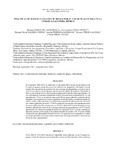
Please use this identifier to cite or link to this item:
http://ricaxcan.uaz.edu.mx/jspui/handle/20.500.11845/682Full metadata record
| DC Field | Value | Language |
|---|---|---|
| dc.contributor | 120243 | es_ES |
| dc.contributor.other | 0000-0001-5371-6676 | es_ES |
| dc.contributor.other | https://orcid.org/0000-0001-5371-6676 | - |
| dc.coverage.spatial | Comarca Lagunera. 2005-2015 | es_ES |
| dc.creator | Esquivel Valenzuela, Berenice | - |
| dc.creator | Cueto Wong, José Antonio | - |
| dc.creator | Valdez Cepeda, Ricardo David | - |
| dc.creator | Pedroza Sandoval, Aurelio | - |
| dc.creator | Trejo Calzada, Ricardo | - |
| dc.creator | Pérez Veyna, Oscar | - |
| dc.date.accessioned | 2019-02-27T18:48:41Z | - |
| dc.date.available | 2019-02-27T18:48:41Z | - |
| dc.date.issued | 2019-01-29 | - |
| dc.identifier | info:eu-repo/semantics/publishedVersion | es_ES |
| dc.identifier.issn | 0188-4999 | es_ES |
| dc.identifier.uri | http://localhost/xmlui/handle/20.500.11845/682 | - |
| dc.identifier.uri | https://doi.org/10.48779/txrj-zc47 | - |
| dc.description | From 2005 to 2015 , 9653 ha/year of vegetables were cultivated in the Comarca Lagunera, where the intensive use of pesticides stands out. The objective of this study was to characterize the practices of pesticide use and management in horticultural crops in this region an the risk they entail to health and environment. The study was carried out during 2015 in the Comarca Lagunera of Coahuila and Durango, México. A stratified random sampling size of 90 surveys applied to vegetable producers. The vegetables with the largest area planted were, in descending order, melon, watermelon, pepper and tomato; Organphosphorous pesticides were the most used, applied for 65.7% population surveyed. The active ingredient with the largest application was carbofuran with 42 %. Only 40% of producers have received training on the proper use and management of agrochemicals and 75 % of producers do not hace personal protection equipment. Sixty one percent of the producers leave the containers in the field or burn them after use and 34% hace suffered pesticide poisoning at last once. Training is sporadic and the advance average age of the producers increases the environmental risk and health by the use of these agrochemicals | es_ES |
| dc.description.abstract | En el período de 2005-2015 se cultivaron en promedio, 9653ha/año de hortalizas en la Comarca Lagunera, donde destaca el uso intensivo de plaguicidas. El objetivo fue caracterizar las prácticas de uso y manejo de plaguicidas en cultivos hortícolas de esa región y el riesgo que suponen para la salud y el medio ambiente. Las hortalizas con mayor superficie sembrada fueron en orden descendente: melón, sandía, chile y jitomate. Los plaguicidas organofosforados fueron los de mayor uso; el 67.5 % de la población encuestada, los utiliza. El ingrediente activo de mayor aplicación fue el carbofurano; solo el 40% de los productores han recibido capacitación para el manejo y uso adecuado de agroquímicos; el 75% de los productores no cuentan con equipo de protección personal; la capacitación es esporádica y la dead avanzada promedio de los productores, incrementa el riesgo ambiental y el daño a la salud por el uso de estos agroquímicos. | es_ES |
| dc.language.iso | spa | es_ES |
| dc.publisher | Sección Editorial del Centro de Ciencias de la Atmósfera de la Universidad Nacional Autónoma de México | es_ES |
| dc.relation | https://www.revistascca.unam.mx/rica/index.php/rica | es_ES |
| dc.relation.ispartof | https://www.revistascca.unam.mx/rica/index.php/rica | es_ES |
| dc.relation.uri | generalPublic | es_ES |
| dc.rights | CC0 1.0 Universal | * |
| dc.rights.uri | http://creativecommons.org/publicdomain/zero/1.0/ | * |
| dc.source | Revista Internacional de Contaminación Ambiental, Vol. 35, No. 1, enero 2019 | es_ES |
| dc.subject.classification | CIENCIAS AGROPECUARIAS Y BIOTECNOLOGIA [6] | es_ES |
| dc.subject.other | Contaminación ambiental | es_ES |
| dc.subject.other | hortalizas | es_ES |
| dc.subject.other | control de plagas | es_ES |
| dc.subject.other | carbofurano | es_ES |
| dc.title | Prácticas de manejo y análisis de riesgo por el uso de plaguicidas en la comoarca lagunera, México | es_ES |
| dc.type | info:eu-repo/semantics/article | es_ES |
| Appears in Collections: | *Documentos Académicos*-- UA Estudios del Desarrollo | |
Files in This Item:
| File | Description | Size | Format | |
|---|---|---|---|---|
| Prácticas de manejo en uso de pesticidas 52937-158116-1-PB.pdf | Investigación aplicada | 441,55 kB | Adobe PDF |  View/Open |
This item is licensed under a Creative Commons License
